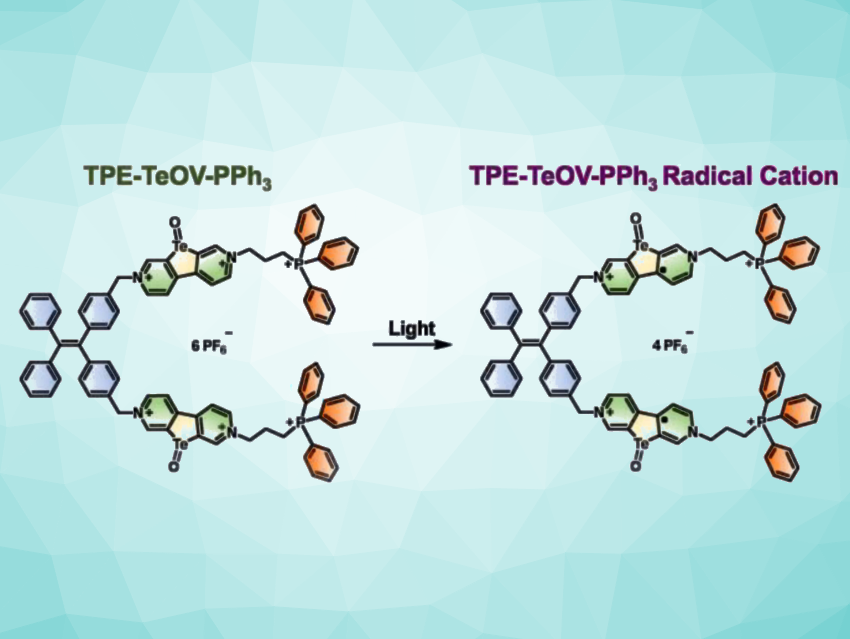As an alternative to traditional therapy methods against cancer, photodynamic therapy (PDT) has received increasing research attention. This is due to its low systemic toxicity, high selectivity, and reduced potential for side effects and resistance. Photosensitized reactions involving oxygen are framed as either as type I or type II. The hypoxia (low oxygen concentration) in the environment around tumors restricts the PDT effect of conventional type-II photosensitizers, which are highly dependent on O2.
Although type-I photosensitizers for PDT are known, they can have drawbacks such as insufficient biosafety or weak emissions in the aggregate state. Therefore, it would be useful to develop type-I photosensitizers with good biosafety, structural diversity, flexible preparation, and aggregation-induced emission (AIE) characteristics.
Gang He, Xi’an Jiaotong University, China, and colleagues have prepared a new type-I of photosensitizer (TPE-TeV-PPh3, oxidized form pictured above on the left). The team combined a tetraphenylethylene (TPE) group with AIE characteristics (pictured in blue), a classic triphenylphosphine mitochondrial targeting group (pictured in orange), and telluroviologen (pictured in green/yellow). The telluroviologen can be oxidized by H2O2 in the environment around tumors and then produce a large number of highly stable radical cations with prolonged lifetime under light irradiation (pictured above), which can produce reactive oxygen species efficiently.
The luminescence intensity of TPE-TeV-PPh3 increased significantly after specific oxidation by excess H2O2 around tumors, without responding to normal tissues. This can be used for the imaging of tumors. Thus, TPE-TeV-PPh3 could be useful in tumor diagnosis and treatment, and the work can provide new ideas for the design of AIE-active type-I photosensitizers.
- Cationic telluroviologen derivatives as type‐I photosensitizers for tumor photodynamic theranostics,
Qi Sun, Qi Su, Yujing Gao, Kun Zhou, Weijie Song, Penghe Quan, Xiaojian Yang, Zhishen Ge, Yanmin Zhang, Gang He,
Aggregate 2022.
https://doi.org/10.1002/agt2.298




